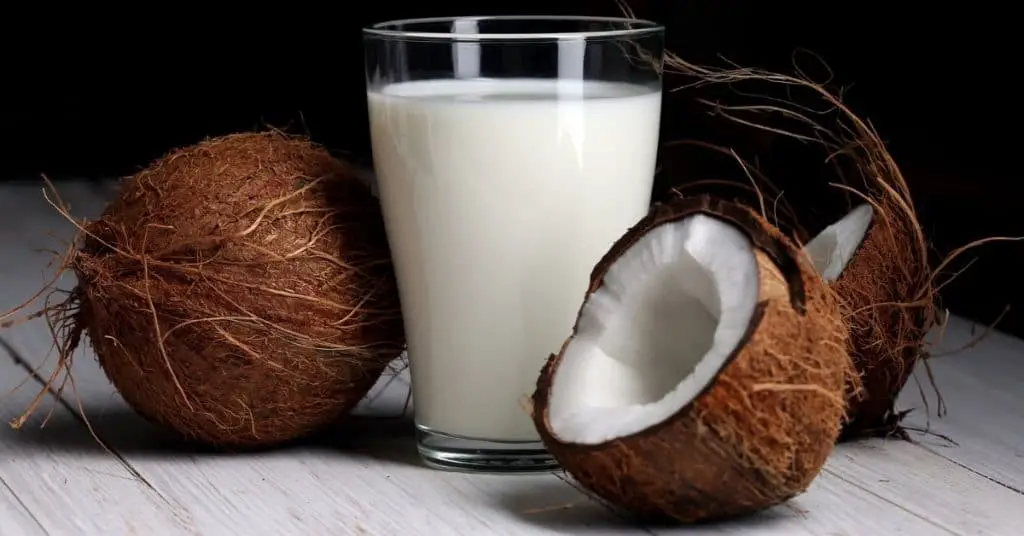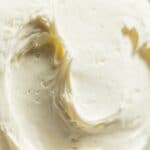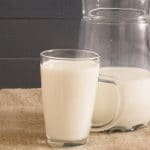In a nutshell: Yes, you can freeze coconut milk to extend its shelf life, but it may develop a curdled texture. However, it’s still suitable for cooking and baking.
Besides being a dairy milk alternative, coconut milk brings a delicious flavor and creaminess to dishes. Often used in curries, casseroles, soups, and desserts, coconut milk is suitable for both sweet and savory applications.
Its viscosity depends largely on the fat content which varies from a thick, creamy consistency to a thinner milky variety.
Although manufacturers do not recommend freezing due to small textural changes, you can freeze leftover coconut milk to prevent waste and extend its shelf life.
Below you will find out everything you need to know about freezing coconut milk, and how to use it once thawed.
Can Coconut Milk Be Frozen?
Yes, you can freeze coconut milk to extend its shelf life for future use. However, it is important to know that the consistency of the coconut milk will not be the same once it has been frozen and thawed. The fat content will split on freezing which causes a curdled texture.
Despite the texture change being unpleasant to drink or use as is, thawed coconut milk will still be perfectly fine for use in cooking and baked products. It will provide the same creamy taste as before it was frozen.
Follow the steps below to minimize curdling during the freezing process.
How To Freeze Coconut Milk
Whether you are freezing a carton of coconut milk or leftover canned coconut milk, there are two methods you can use. To avoid waste, you may want to freeze coconut milk in smaller quantities. This allows you to defrost only as much as you need at a time.
Method 1: How to Freeze Coconut Milk Ice Cubes
Step 1: Portion and Freeze
Make sure the coconut milk is fresh and has not reached its expiry date. Pour the coconut milk into clean ice cube trays and place them into the freezer until completely frozen. Never freeze canned coconut milk in the can!
Step 2: Pack and Seal
Remove the frozen coconut milk cubes from the ice cube tray and place them into a zip lock freezer bag.
Keeping the coconut milk cubes in an air-tight environment will prevent the milk from absorbing odors from surrounding foods which could affect the taste. Press any air out of the bag before sealing.
Step 3: Label
Label the bag with the date and place it in the freezer.
Method 2: How to Freeze Coconut Milk in Containers
Step 1: Decant
Pour one cup (or less) of coconut milk into air-tight resealable bags or airtight containers that are freezer-friendly. The containers must be air-tight to prevent the coconut milk from spoiling faster and from absorbing odors from surrounding foods.
Step 2: Close
If using zip lock freezer bags, seal them by pressing out as much air as possible.
Be careful how much coconut milk you pour into the food storage containers. Leave an inch of headspace as the liquid will expand on freezing and may burst the container if filled to the brim. Close the air-tight containers.
Step 3: Label and Freeze
Label the bags or containers with the contents and date if necessary. Containers should be placed upright in the freezer. Freezer bags can be placed on a baking sheet to freeze flat.
Once frozen, remove the baking sheet and easily store the frozen coconut milk stacked in the freezer with plenty of space to spare.
How To Thaw Frozen Coconut Milk
The best option to defrost coconut milk is by placing it in the fridge overnight.
Once defrosted, you will notice that the coconut milk has separated. The separation is natural and does not mean that the product has spoiled.
For a creamier consistency, place the defrosted coconut milk into a blender and give it a whizz for a few seconds. Alternatively use an immersion blender, hand blender, or give it a good whisk by hand.
Faster ways in which to thaw the coconut milk is to place the container or freezer bag in a cold water bath or to defrost it in the microwave.
If you are thawing the coconut milk in the microwave, ensure that the container is microwave-safe. Thaw the coconut milk for 20 to 30 seconds at a time, stirring between each interval to ensure even heat distribution.
Types of Coconut Milk
Coconut milk is a white cloudy liquid extracted from the flesh of mature coconuts. Its milky color and rich taste is a result of the high oil content. Coconut milk is divided into various types according to its fat content.
Thick coconut milk, also known as coconut cream, has the highest amount of fat. Coconut milk, also known as thin coconut milk, has a maximum of 20% fat, while coconut skim milk has low-fat content.
Coconut milk is used as a general milk substitute suitable for individuals who are lactose intolerant or vegan. It is also used for cooking, especially stews, curries, soups, and baking.
See more: How long does coconut milk last?
FAQs
Conclusion
Despite textural changes on freezing, thawed coconut milk can be incorporated into any cooked dish or baking recipe for a delicious outcome.
It is hard to purchase coconut milk in small quantities, so freezing what is left after cooking is the perfect way to extend its shelf life for 3 months and use it for another meal.
Various brands of coconut milk may respond differently to freezing so you may want to experiment to see which one works best for you.
Up next:
*Image by depositphotos.com/hvoya









